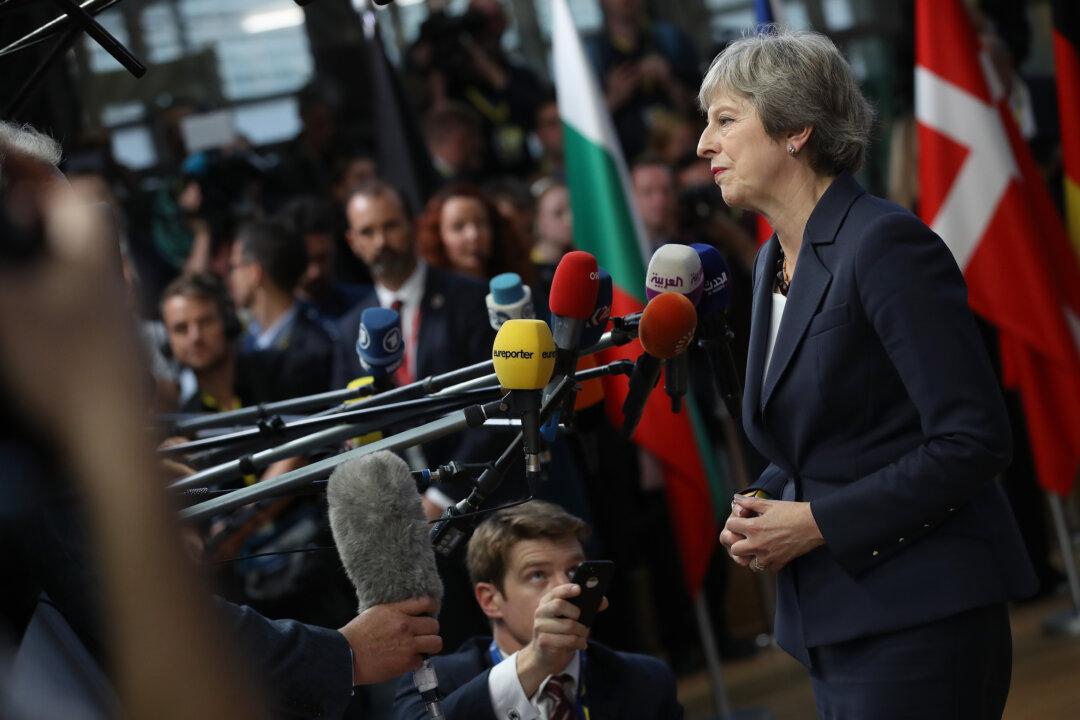LONDON—With the clock ticking on the stuttering Brexit talks, British Prime Minister Theresa May has played one of the last cards in her negotiating hand: time.
May floated the possibility of potentially delaying the departure of the UK from the European Union when she met with EU leaders during a summit on Oct. 18, in an attempt to try to unlock negotiations.





